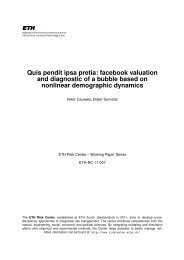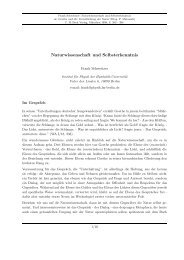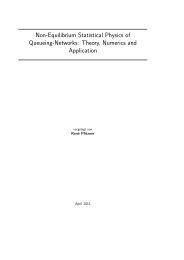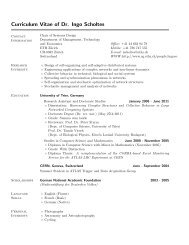Using Laboratory Experiments to Study Law and Crime - Chair of ...
Using Laboratory Experiments to Study Law and Crime - Chair of ...
Using Laboratory Experiments to Study Law and Crime - Chair of ...
Create successful ePaper yourself
Turn your PDF publications into a flip-book with our unique Google optimized e-Paper software.
was shifted from low <strong>to</strong> high, theft rates dropped from 60 % <strong>to</strong> 40 %. But, this effect declinedover time <strong>and</strong> subjects gradually started committing more crime. Note that the severity <strong>of</strong>punishment affected crime more than expected, suggesting that subjects were not good atanticipating that law enforcers were going <strong>to</strong> reduce their efforts. Further, theft increased slowlyover time – suggesting also that subjects were not good at using their experience <strong>to</strong> update theirperceptions <strong>of</strong> punishment. That is, they updated their perceptions based on experience, but didso slowly.The results show that subjects varied in their reactions <strong>to</strong> punishment severity. Thosewho originally were the most deterred by strong punishment increased their theft behavior morethan those who started out with high theft levels. One interpretation <strong>of</strong> this finding is thatsubjects varied in their expectations <strong>of</strong> being punished. Those whose expectations were the leastaccurate, updated them over time as they realized that they were not being punished. Gradually,they increased their stealing. Those who started out with more accurate perceptions had lesschange in their behavior over time. This finding is consistent with criminological argumentssuggesting that people are naive about the consequences <strong>of</strong> law breaking (Minor <strong>and</strong> Harry,1982; Paternoster et al., 1987; <strong>and</strong> Tittle, 1980).Rauhut’s findings are consistent with studies showing that severe punishments initiallydiscourage crime, but that over time, crime rates rebound (see, for example, Ross, 1973; 1975).They are also consistent with research showing that crackdowns have residual deterrent effectsthat extend after the crackdown s<strong>to</strong>ps. If people are slow <strong>to</strong> update their perceptions based ontheir experience, then we would expect them <strong>to</strong> continue <strong>to</strong> refrain from crime <strong>and</strong> then slowlyreturn <strong>to</strong> their usual criminal activities.Experiment 2 produced complementary results <strong>and</strong> provided additional support for theproposed mechanism (Rauhut, 2010). It showed that as rewards for enforcement increased, crimerates dropped from 47% <strong>to</strong> 38%. Enforcement efforts also increased from 39% <strong>to</strong> 60%. Aspredicted, strengthening the incentives for law enforcers reduced crime.19







